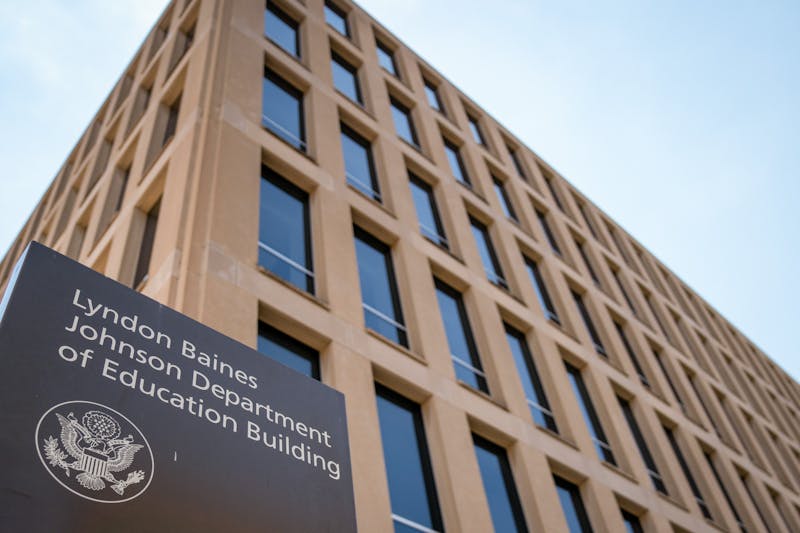Despite last Tuesday's collapse of the World Trade Center towers, building experts insist that the age of the skyscraper has not ended.
They contend that little could have been done in the design of the Twin Towers to prevent them from collapsing after such a severe blow.
"It strikes me as unlikely that there would have been design attitudes that could have been taken in the beginning to have mitigated this particular problem," said Thomas Boothby, professor of architectural engineering at Penn State University.
With rescue operations still under way at New York's fallen landmarks, building professionals know little about the actual sequence of events that caused the structures to collapse.
Both towers, which were completed in the early 1970s, incorporated a rigid "hollow tube" structural system considered innovative at the time. The system imparted great strength at its edges through steel columns spaced unusually close around the perimeter of the structure. A dense inner core of columns helped brace the structure against wind loads.
"The structure was a very, very strong structure," said Louis Geschwindner, professor of architectural engineering at Penn State.
The towers' soundness allowed them to sustain the impact of Boeing 767 jets -- which weigh 400,000 pounds and can travel at upwards of 300 m.p.h. -- for, in the case of the North Tower, an hour and a half. The South Tower stood for 45 minutes. Had they collapsed immediately, many more lives would have been lost.
Some have said that the towers were designed to withstand the force of the smaller Boeing 707 jet, but that is "folklore," according to Ronald Klemencic, president of Skilling Ward Magnusson Barkshire, the Seattle-based engineering firm that designed the trade center's skeleton.
"To my knowledge there was no detailed design done on that issue," said Klemencic, who is also the chairman of the Council on Tall Buildings and Urban Habitat.
The real culprit -- it is assumed -- was not the impact but the intense fire that fed off of thousands of gallons of jet fuel.
"That melted the steel and turned it into Play-Doh," Geschwindner said.
The steel is believed to have been fireproofed with asbestos, which is applied based on the expected flammability of the building's contents and the expected evacuation time, according to Boothby. Normally, it allows the structure to ward off fire damage for roughly two hours.
But he said that with the jet fuel, the flammability of the trade center towers became "thousands of times greater than what you'd have in a normal high-rise building."
The weakened columns then buckled under the weight of the approximately 20 floors that they supported, causing them to drop tons of concrete, furnishings and fixtures onto floors below. Rather than the failure of the columns, it was the failure of the floor system -- which could not handle such an awesome additional load -- that caused a total collapse.
"Each floor pancaked on top of each other, and at that point it just sort of unzipped," Geschwindner said, adding that the South Tower -- which was hit after the North Tower --ÿcollapsed first because it was hit on a lower floor. This meant that the damaged columns had to carry an even greater load.
Klemencic said that, like after a major earthquake, building codes would be strengthened in the future, particularly in areas of security and life safety. On the structural side, the American Institute of Steel Construction and the American Society of Civil Engineers have announced the formation of task forces to study the collapse.
Boothby believes that designing a building to survive such a situation is possible.
"As always, engineers aren't one to admit that something's impossible -- it's just how much money do you have?" Boothby said. "And then you have to balance that against the likeliness of an event."
"What you have to do is build in a lot of redundancy somewhere," Boothby added.
However, any changes that may take place would likely all be behind the scenes.
"You're not going to all of a sudden see buildings looking radically different," Klemencic said.
Even before the events last week, the need to pack people into skyscrapers had been questioned due to advanced communication technologies. Some have also said that fear of a similar terrorist attack in the future might push people away from high-rise environments.
Klemencic said that his firm has had a record number of high-rise commissions over the last five years due to a "major move back into cities," and he does not see the number plummeting any time soon.
"I don't think that is going to reverse itself," he said.
In Philadelphia, the tragic events in New York have not deterred the plans of Liberty Property Trust to build a new 50-story, $390 million office tower at 17th and Arch streets. Construction is set to begin next May.
"I cannot foresee us allowing our business to be affected by this at all," Liberty spokeswoman Jeanie Leonard said. "If it's appropriate to build a building, we'll build a building."
The Daily Pennsylvanian is an independent, student-run newspaper. Please consider making a donation to support the coverage that shapes the University. Your generosity ensures a future of strong journalism at Penn.
DonatePlease note All comments are eligible for publication in The Daily Pennsylvanian.







